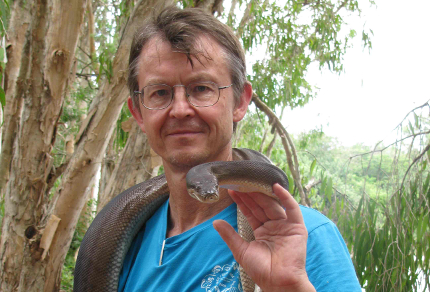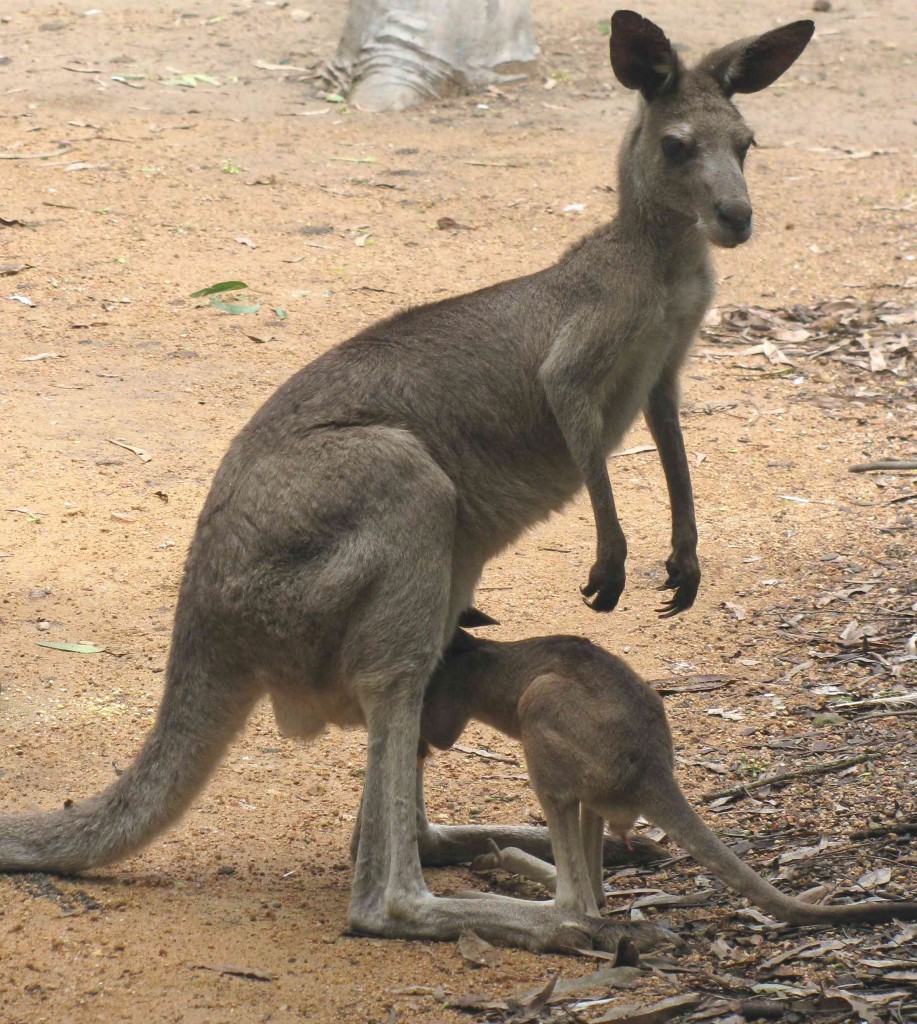
Eastern Grey Kangaroos (© Vilis Nams)
At 8 a.m., Vilis and I presented ourselves at the entrance to Billabong Sanctuary, which subtitles itself an ‘Australian Wildlife Experience’ and is located 11 kilometres south of Townsville on the Bruce Highway. Consisting of wildlife enclosures positioned around a water hole, the sanctuary covers 25 acres of land and helps to raise funds to preserve endangered Australian wildlife species.
Within the sanctuary, red kangaroos and eastern grey kangaroos roamed freely, lolling on the sandy shore of the water hole and tolerating human approach with placid indifference (or placid interest if you had food for them). When they lay stretched out, their legs seemed impossibly long, with thin bones clearly visible beneath the skin. In fact, the kangaroos seemed thin all over and, when hopping directly toward me, presented such a narrow perspective that it was as though they had been formed to squeeze through the eye of some ecological needle.
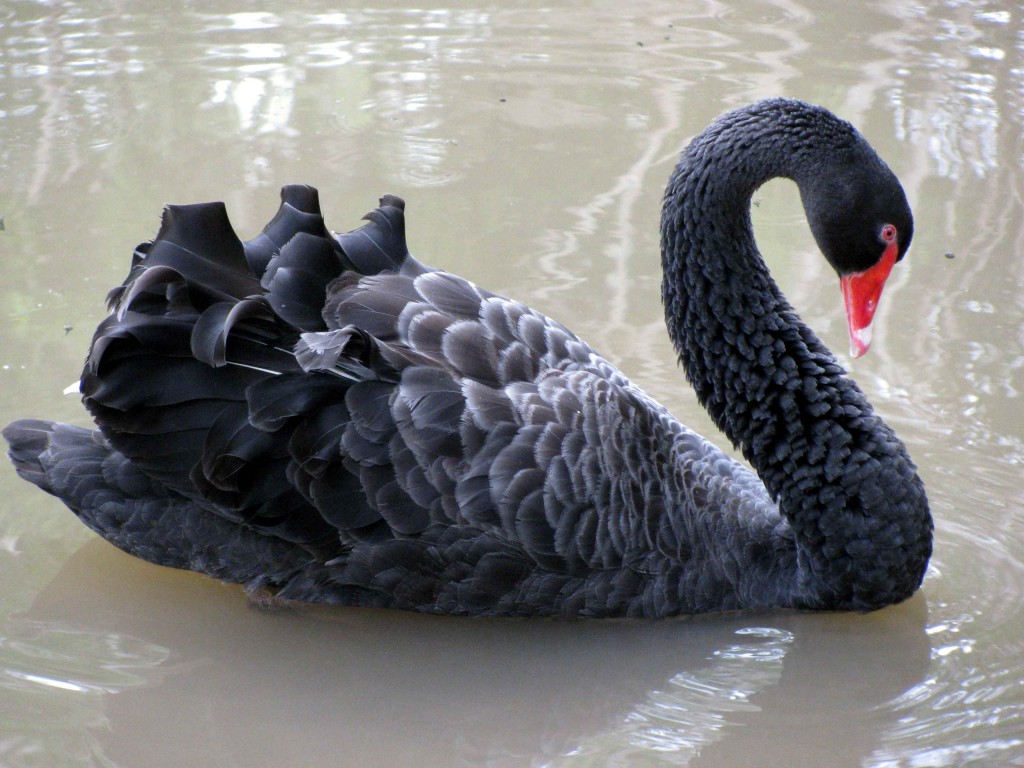
Black Swan (© Vilis Nams)
Flocks of white ibises and magpie geese perched in trees overhanging the water, barking and honking the world awake. Far more subdued, dusky moorhens and plumed whistling ducks stood at the edge of the murky water, the moorhens’ brilliant scarlet face shields a perfect foil for their grey-brown plumage. Magpie geese and a black swan floated on the pond, the swan’s feathers fluffed into pearly, curved scales as it bowed its head deeply.
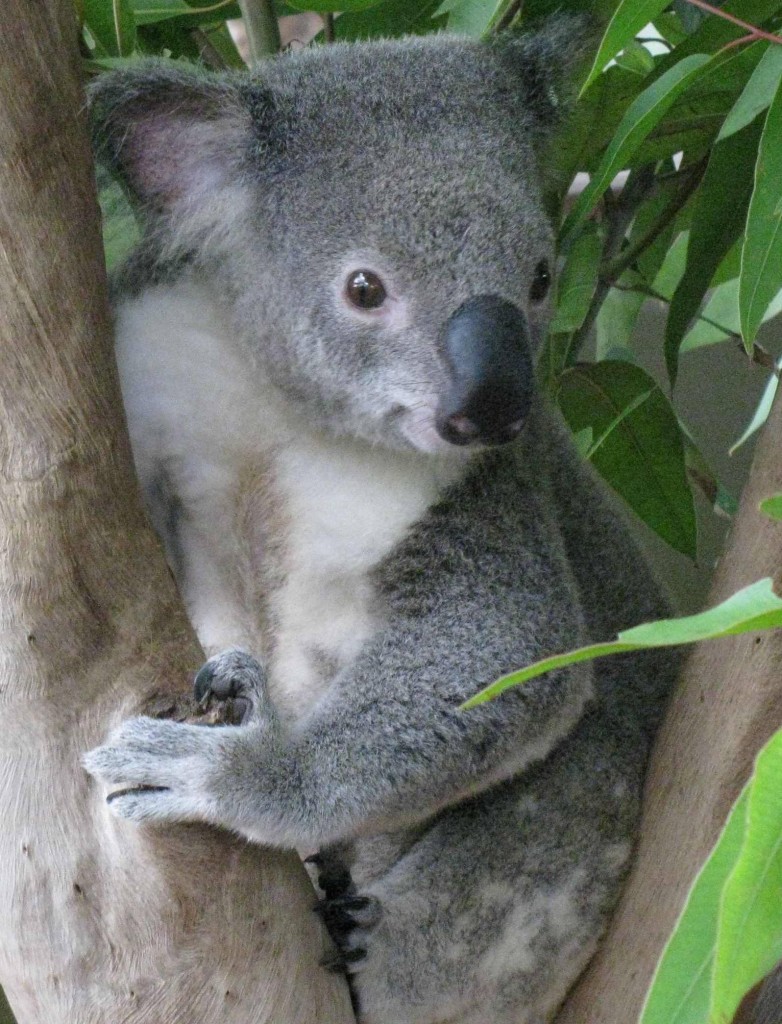
Koala (© Vilis Nams)
The koalas were surprisingly agile, climbing lopped-off tree trunks with ease, nimbly backing down trunks, loping along branches, and leaping from branch to branch as their keepers provided them with fresh eucalyptus leaves. They looked like tailless, grey and white bears with bushy ears and leathery black nose pads. They rested on their butts while they ate, tightly gripping branches and leaves with their clawed toes arranged in a three-two split on each foot to facilitate gripping. When not moving, the koalas seemed to disappear into the bunches of fresh eucalyptus branches, which made Vilis and me realize they will be tough to spot in the wild.
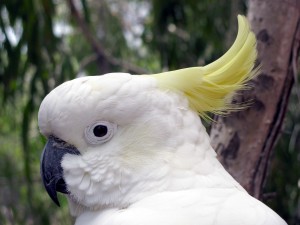
Sulphur-crested Cockatoo (© Vilis Nams)
Aviaries held collections of parrots flaunting colours that ranged from demure whites, greys, and pinks to eye-scorching combinations of red, green, blue, and yellow. Skinks basked on rocks in low-sided enclosures, and metre-long lace monitors in more secure enclosures flicked out long tongues, the large reptiles’ black and pale yellow scales resembling mosaic designs which I thought could inspire patterns for weaving and had undoubtedly inspired Aboriginal art.
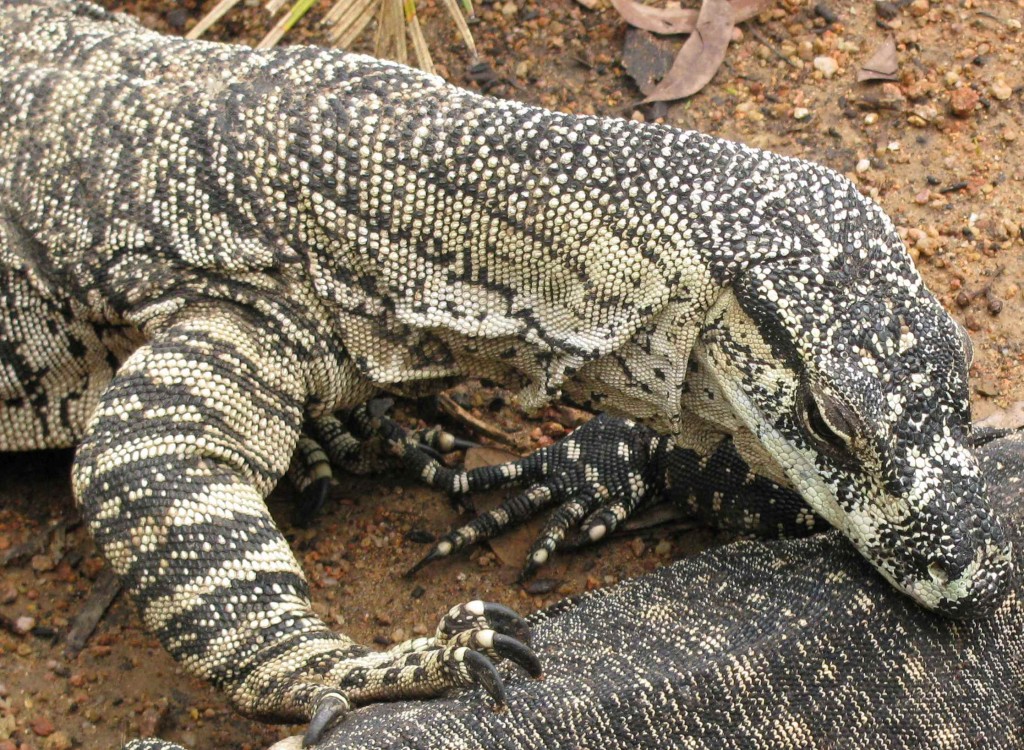
Lace Monitors (© Vilis Nams)
In a swampy, wooded enclosure, a southern cassowary stood on thick legs and heavily-clawed feet, its plumage a shaggy black cloak, its bare head and neck pigmented with patches of red, royal blue, and pale, pearly blue. Yesterday at suppertime, Vilis told me that the thing which dingo trappers are most afraid of is the cassowary, because the trappers risk being disembowelled while they free cassowaries from leg-hold traps.
From interpretive signs, I learned that the cassowary’s crest, which I had thought to be hard and bony, is in fact rather soft, and that this species of bird has no gizzard, as do other birds. In its native north Queensland tropical rainforest habitat, the cassowary eats more than 150 kinds of fruits, the seeds of which pass through the bird’s digestive tract without being ground up, and are dispersed as they are excreted. Thus, the cassowary’s feeding habits are intimately linked with the composition of tropical rainforests.
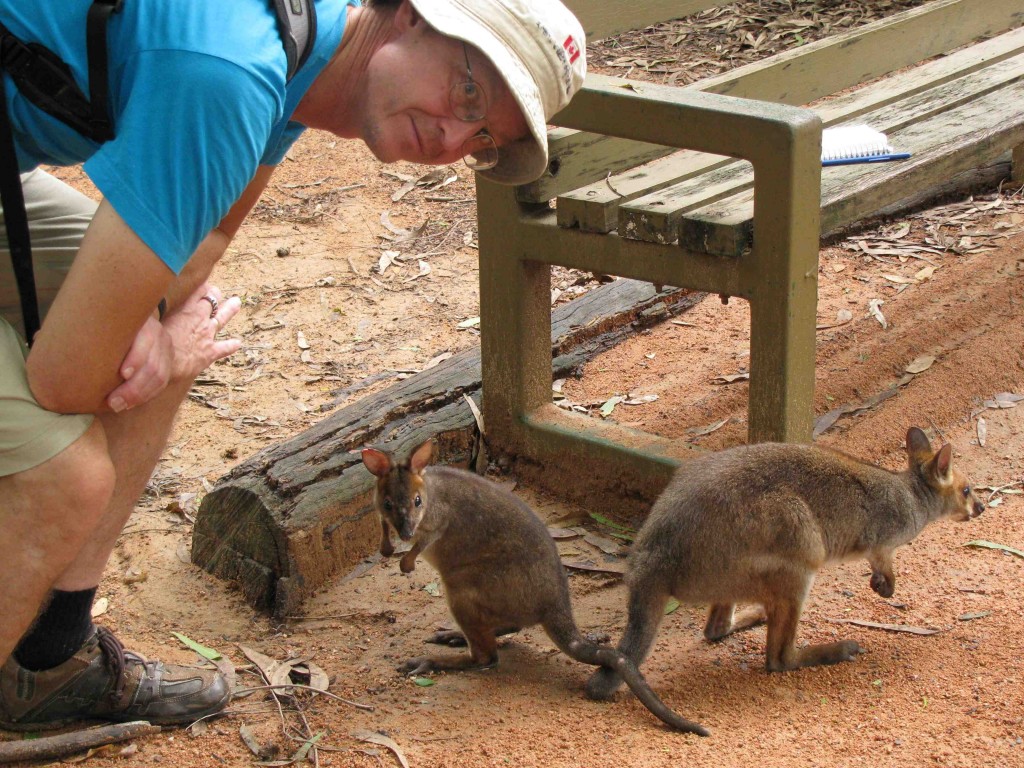
Vilis with Red-legged Pademelons (© Magi Nams)
We crossed a bridge over a section of pond and observed both dusky waterhens and Krefft’s turtles paddling the water, the birds with vivid red, slender legs and toes, the reptiles with broad, brown, clawed feet. In a momentary flash of ecological symbolism, I saw them representing distinct worlds – above water and below water – and distinct vertebrate classes – Aves and Reptilia – in juxtaposition, meeting at the water’s surface as if it were some boundary in the passage of time, one approaching from above, and one from below.
Beyond the bridge, we visited red-legged pademelons in their enclosure, the mini-macropods endearingly friendly, with one female carrying a bright-eyed joey in her pouch.
Farther on, we scanned shorelines to spot freshwater and estuarine crocodiles in their enclosures, the big reptiles often camouflaged with tiny green duckweed leaves and basking lazily in the sun or half in and half out of the water. They seemed lethargic, their bodies resting heavily on the ground, their legs splayed out to the sides in typical reptilian fashion. However, when feeding time arrived, we saw the lightning speed and power of their snapping jaws and their classic hunting technique of submerging in the water near shore and then lunging up onto shore with open jaws. We watched a huge male slip into the weed-covered water and remain submerged, then push upward off his muscular tail to launch his body into the air and snatch a fish head held ten feet above the water. This is why being croc wise means staying away from the water’s edge in croc country.
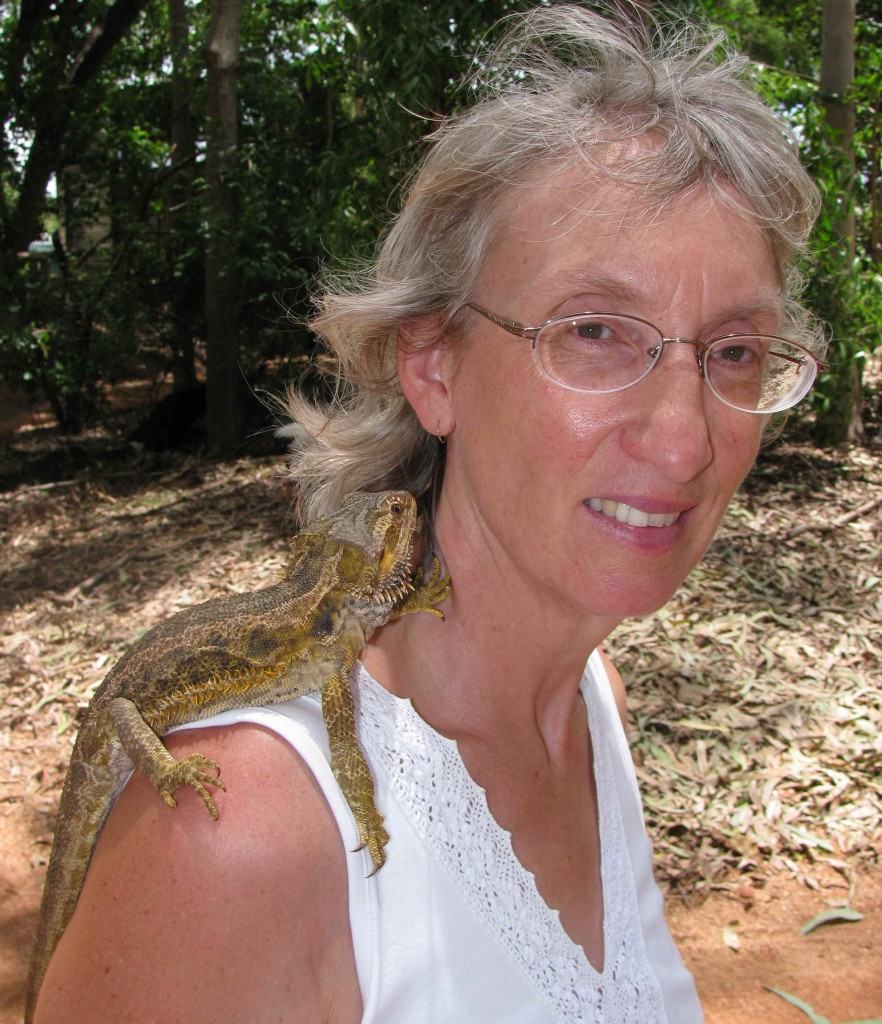
Here I am with a Bearded Dragon (© Vilis Nams)
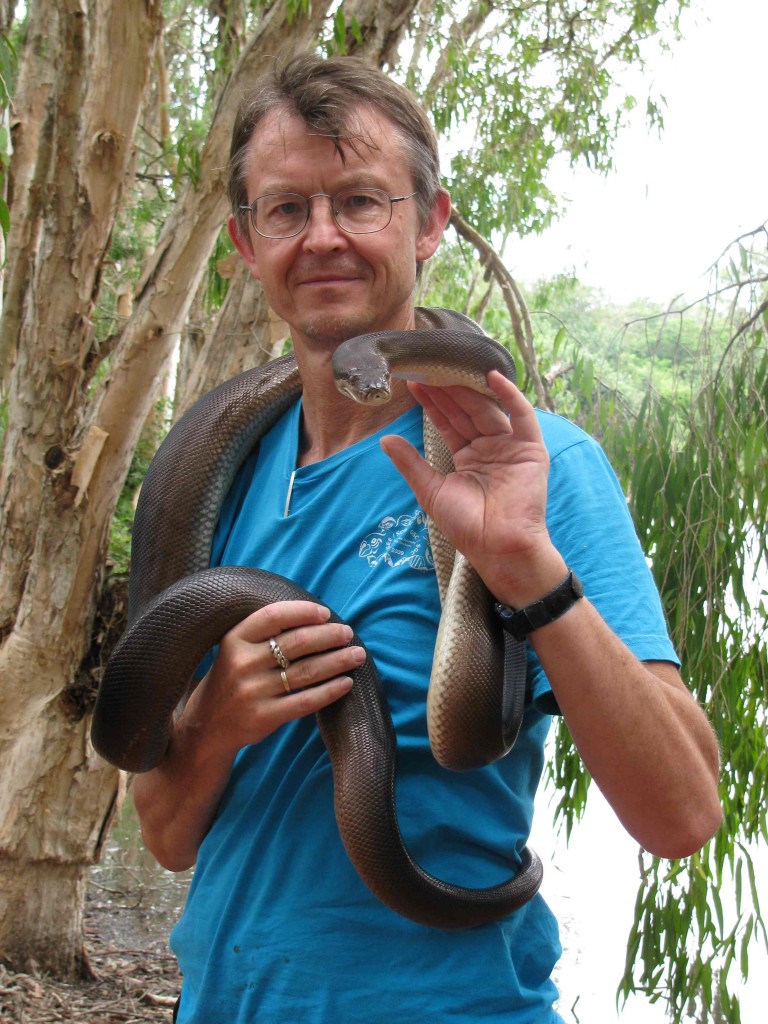
Olive Python (© Magi Nams)
We scratched the belly of a common wombat held by one of the sanctuary’s interpretive staff, wrapped Ollie the olive python around our shoulders, allowed a prickly-feeling bearded dragon to climb our shirts, and held a blue-tongued lizard, a baby saltwater croc, and a young male red-tailed black-cockatoo who was enamoured with my gold earrings. Five hours after our arrival, we were deliciously satiated with Australian wildlife. Well done, Billabong Sanctuary!

